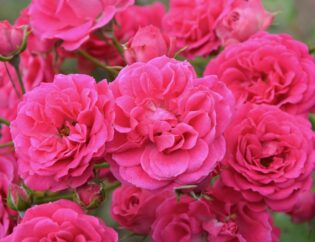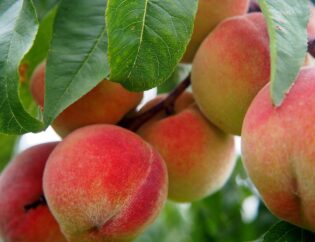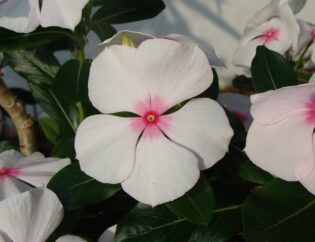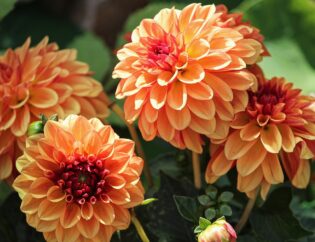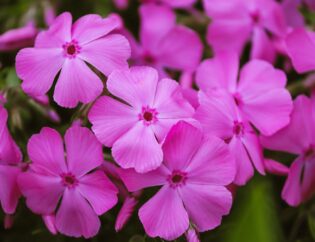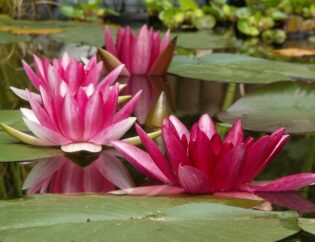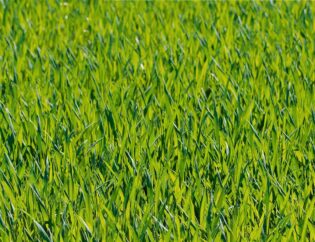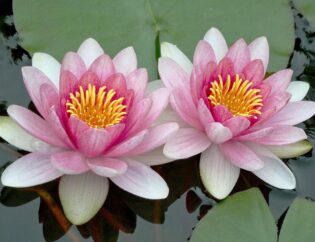
Tired of hand watering? Few homeowners have time in their busy schedules to water the plants every day. Thankfully, drip irrigation systems are a great way to keep the yard green and lush without spending hours on the end of a watering hose.
Curious about what it takes to install a drip irrigation system? Let’s see what’s involved!
What Is a Drip Irrigation System?
A drip irrigation system is an ingenious water-saving lawn and garden watering system. Essentially, irrigation tubing is run to each plant and a network of tubing supplies water.
Water runs gently through the system at both low pressure and low volume. It is delivered directly to the roots of the plants through an emitter. Consequently, the system uses less water than a traditional irrigation system and also reduces overspray.
The tubes are easy to hide, just cover them over with a bit of mulch. But be careful around the emission points so they don’t get clogged.
What Are the Advantages of a Drip System?
The biggest advantage of a drip irrigation system is using less water. The supply lines carry water directly to the root zone of the plants without wasting water in overspray. Plants use water more efficiently, less moisture is lost to evaporation, and there is less fungus growth like blight from excess moisture.
Further, the system offers flexibility as the plants grow. Plus, it connects to a regular garden hose spigot without the need to use the home water supply line (though that is an option).
How Much Does a Drip System Cost?
Drip irrigation systems come with an affordable price tag, which is part of their appeal. Plus, certain municipalities offer incentives to install these water-saving systems.
Homeowners that buy and install small DIY systems can save some cash. However, professionally installed systems have the advantage of expert-quality design and installation. And many homeowners enjoy outsourcing the “headache” of gathering materials, digging, installing, and setting up the system.
The cost varies depending on the type of system (aboveground vs subsurface), size of the yard, type of materials, and density of the water lines.
What Components and Parts Do I Need?
Here are the basics for installing a drip irrigation system:
●Backflow Preventers
Don’t like the idea of drinking water from the irrigation system? Backflow preventers and anti-siphon devices keep the water from flowing back into the home’s drinking water supply.
●Pressure Regulators
One of the main deals about a drip system is low pressure that doesn’t send water shooting all over the place. Pressure regulators drop the water pressure coming from the home.
●Filters
Keep debris out of the tubes and emitters with filters. This comes as a built-in feature on pressure regulators.
●Drip Tubing
A length of tubing with water emitters placed at regular intervals to transport water directly to plant roots.
●Fittings
Fittings are used to connect the other system components together.
●Risers
Are used to elevate the emitters above the plants.
●Hole Punch
Use this tool to punch holes in the tubing at the desired intervals for emitter installation.
●Emitters
Are designed to be inserted into the tubing and efficiently deliver water directly to the plants. Emitters will have a Gallons-per-Hour (GPH) rating as well as a PSI rating indicating the max water pressure they can handle.
●Plugs
Come in handy to stop up holes made by mistake and when moving emitters to a different location. It’s nice not to have to replace the entire tube!
●Stakes
Stakes help hold the tubing in place. Further, they support emitters so they are less likely to get clogged with debris.
●Bubblers
Bubblers go on the end of a length of tubing and spray a gentle stream of water in various directions.
●Misters
Misters also go on the end of the tubing but spray a light mist to gently refresh plants.
●Pressure-Compensating Emitters
The water pressure may vary through the drip system. Pressure-compensating emitters ensure that the right amount of water is delivered anyway.
●Timer
Timers make it easy to control the system for perfect watering. Set them to turn on and off as needed to prevent wasting water. Timers even integrate with home automation systems to control the drip irrigation system from a smart device.
●Soaker Hoses
Soaker hoses have a series of holes in them and can work as a type of crude drip irrigation system. This type is less expensive upfront, but without the control of the emitters, it uses more water.
●Kits
Kits make it easy to install DIY drip irrigation systems. Get a kit designed specifically for gardens, container plants, larger landscape plants, vegetable gardens, and flower beds.
How Is It Assembled?
Start putting together a drip irrigation system with a diagram. It is common to use multiple valves and tubes to water different parts of the yard. For example, hardier landscape shrubs may need watering only once a week, but a vegetable garden requires daily drinks.
Figure out which plants need to be on each circuit and how many emitters are needed.
Connect to the water supply and install the needed number of valves. Connect each to a timer. Common options are a timer connected with sprinkler wire and a screw-on hose spigot timer like a Rain Bird. Add a backflow preventer, drip filter, pressure reducer, and adapter onto each valve to connect to the drip system hoses.
Run the tubing through the gardens and install emitters where needed.
Drip System for Raised Beds
Drip systems are perfect for raised beds. Simply bury the hoses between beds to keep them hidden. Use mulch in the beds to hide the lengths of tubing. On the other hand, allow the plant foliage to hide the hoses. Set a timer and forget worrying about watering the plants.
Vegetable Beds and Annuals
Vegetable gardens and annuals tend to be finicky and don’t do well with periods of drought. But they also may struggle if they are over-watered, such as if it rains in addition to the irrigation system. Drip systems make it super simple to make sure they are getting the right amount of water.
Container Plants
It’s a little harder to hide a drip irrigation system’s hoses for container plants, however, it is not impossible. Run the hoses along the fence or side of the house where it is easier to conceal them.
Conversely, bury the tubing under a shallow layer of mulch to cover it. For a seamless design, bring the drip tubing and emitter through the drain hole of each container. The result is nearly invisible irrigation that takes all the hassle out of remembering to water all those containers!
Established Trees
Commonly, established trees don’t need as much water as other types of plants. Place them on their own drip hose and water them once a week instead of every day. But remember to water deeply to encourage a strong, deep root system.
New Perennials and Sapling Trees
During the first season of planting perennials and sapling trees, they usually need extra water. Consequently, adjust the system to water these plants more frequently. Later the system is repurposed to water them at the same frequency as everything else.
Pop-Up Sprinkler Conversion
What if a pop-up sprinkler system already exists? There are conversion kits available to turn existing systems into drip irrigation.
Design Tips
- Hide tubing under mulch to make it less obvious.
- Install PVC pipe in the ground under a walkway. Then, run the tubing through the pipe.
- A great option for hiding the drip tubing in containers is to run the line up through the drainage hole.
- Before installation, understand how many emitters a system will support and how closely they must be installed.
Maintaining the System
- During freezing weather, the drip system must be winterized.
- Flush lines after installation and also in the spring to keep water flowing and debris cleaned out.
- Follow the manufacturer’s recommendations regarding PSI and volume for your system.
- Always plan carefully to avoid putting too many emitters on one line.
- Choose a low flow rate in slow-draining soil with a lot of clay. Sprays and bubblers are useful in sandy soil where the water drains quickly.
Prefer to Keep Your Saturday?
Let us take the yard off your plate and give you back your weekend! We have over 35 years of combined experience caring for Atlanta-area yards and landscapes. Our landscaping services experts are standing by to help you achieve the outdoor space you’ve been envisioning. Contact us today to get going on your next project!
